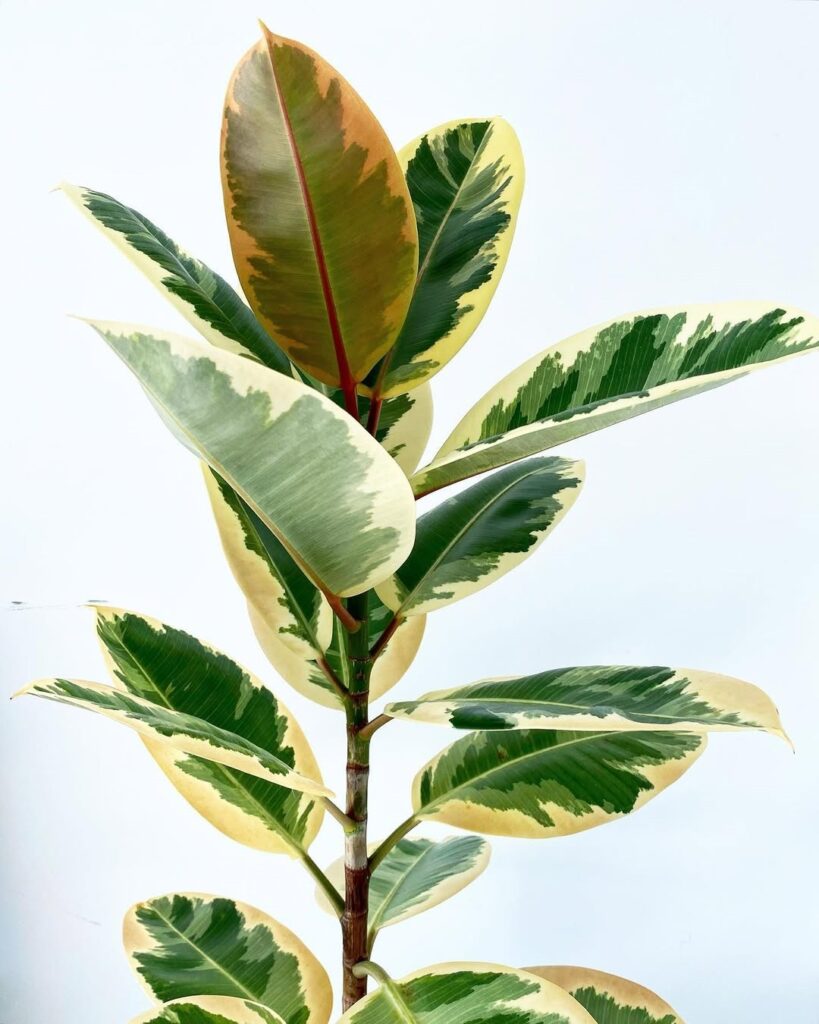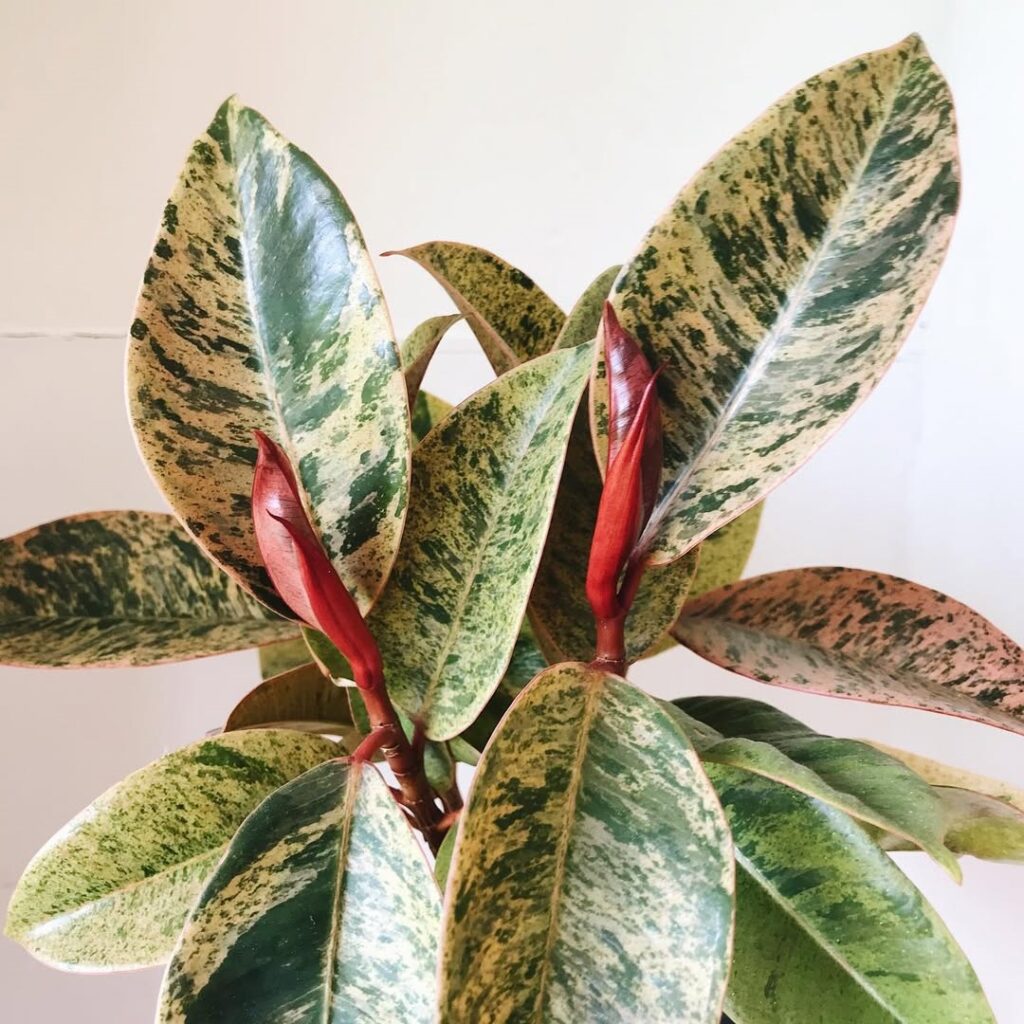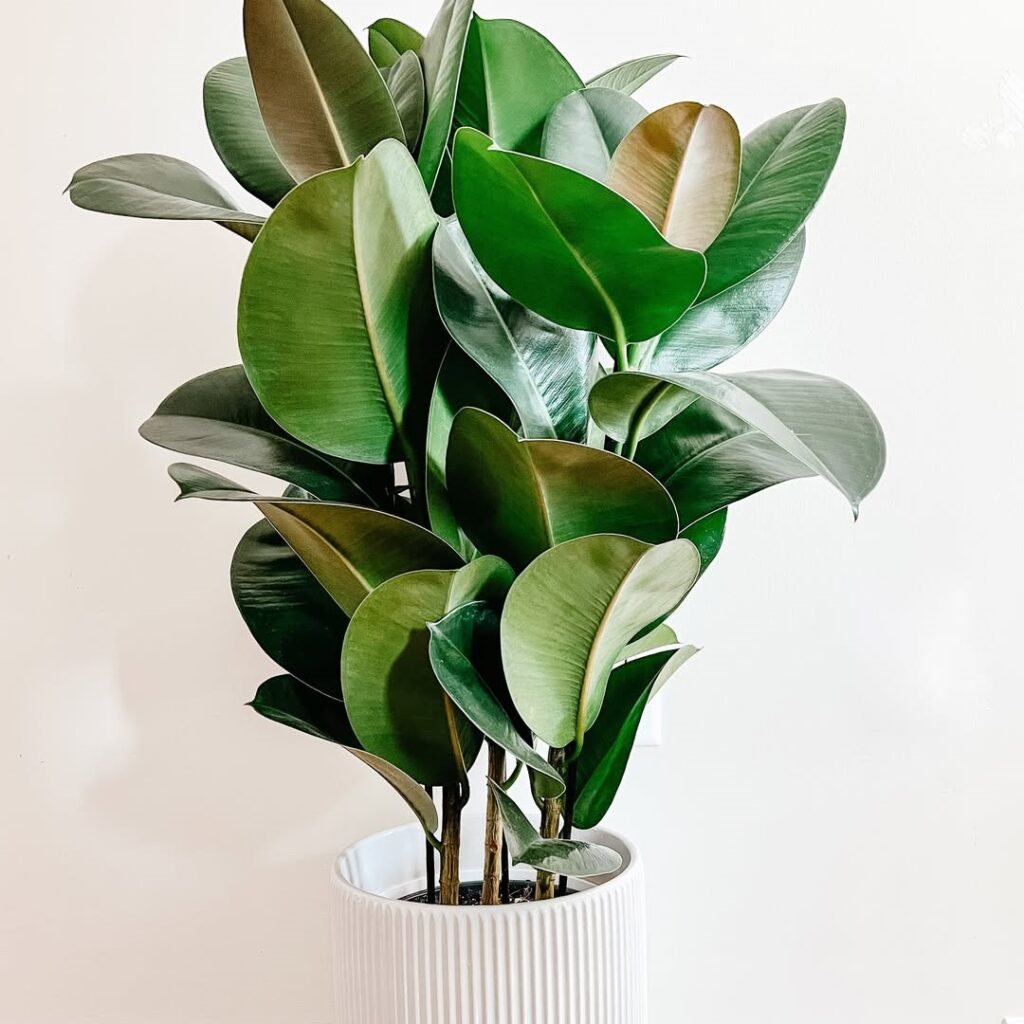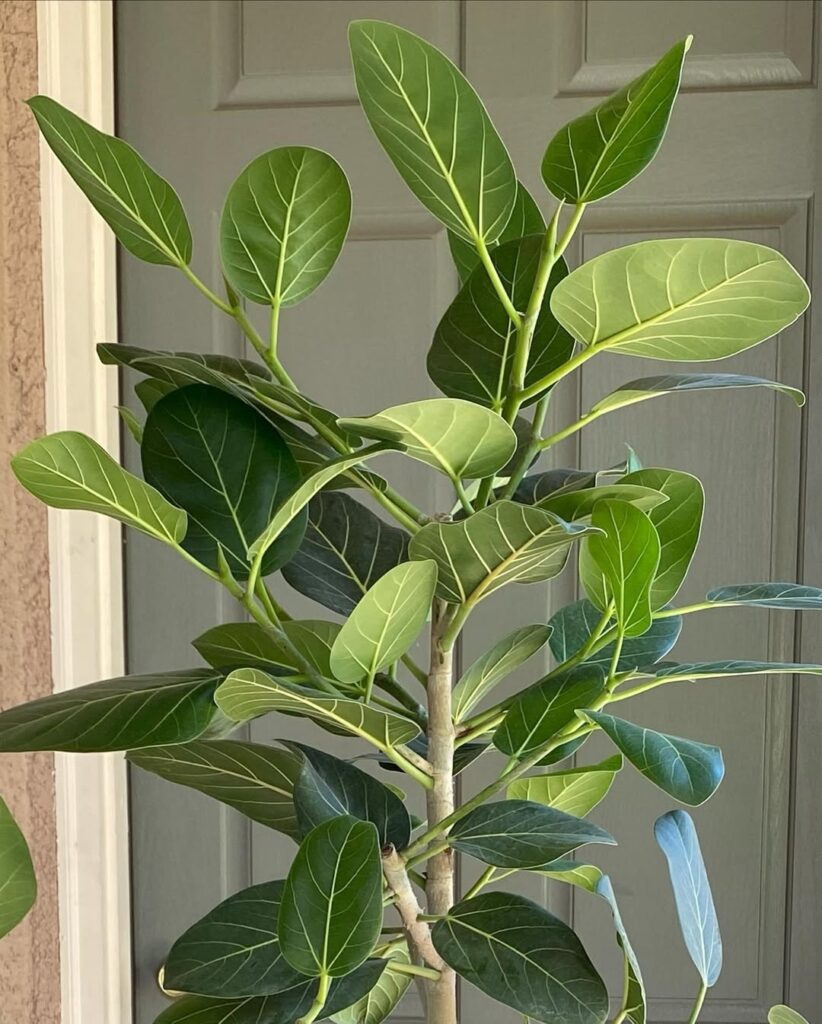The Rubber Plant, or Ficus elastica, is a popular houseplant known for its large, glossy leaves and low maintenance requirements. It’s an excellent choice for both seasoned plant enthusiasts and beginners. With its dramatic foliage and ability to thrive in a variety of conditions, the Rubber Plant can add a touch of elegance and tropical beauty to any indoor space. In this guide, we’ll cover everything you need to know to keep your Rubber Plant thriving.

Contents
Why Choose Rubber Plant?
Rubber Plants offer several benefits:
- Air Purification: They help remove toxins like formaldehyde and benzene from the air.
- Low Maintenance: They require minimal care, making them ideal for busy lifestyles.
- Aesthetic Appeal: Their large, glossy leaves add a touch of elegance to any room.
Ideal Growing Conditions
Light
Rubber Plants are highly adaptable and can thrive in bright, indirect light. They can tolerate low light but will grow more slowly and may become leggy. Avoid direct sunlight, which can scorch the leaves.
Water
Rubber Plants prefer to dry out slightly between waterings. Water when the top inch of soil is dry, which is typically every 1-2 weeks. Overwatering can lead to root rot, so it’s important to avoid letting the plant sit in water.
Soil
Use a well-draining soil mix. A standard potting mix with added perlite or sand works well. Ensure the pot has drainage holes to prevent water from pooling at the bottom.
Temperature and Humidity
Rubber Plants prefer temperatures between 60-75°F (15-24°C). They thrive in moderate to high humidity. If your home has dry air, especially in winter, consider using a humidifier or misting the leaves occasionally.
Fertilizing
Feed your Rubber Plant during the growing season (spring and summer) with a balanced liquid fertilizer diluted to half strength. Fertilize once a month to provide essential nutrients for healthy growth.
Potting and Repotting
Rubber Plants are moderate growers and can stay in the same pot for a few years. However, when the plant outgrows its pot or you notice roots coming out of the drainage holes, it’s time to repot:
- Choose a pot that is 1-2 inches larger in diameter than the current one.
- Fill the new pot with a well-draining soil mix.
- Gently remove the plant from its old pot and shake off excess soil.
- Place the plant in the new pot and fill around it with soil.
- Water lightly and place it in a suitable location.
Propagation
Rubber Plants can be propagated through stem cuttings:
- Cut a healthy stem from the plant, including several nodes.
- Allow the cutting to callous over for a few hours.
- Place the cutting in water or soil.
- If using water, change the water weekly until roots form, then plant in soil.
- If using soil, water sparingly until roots form.
Common Problems and Solutions
Yellow Leaves
Yellow leaves are often a sign of overwatering. Allow the soil to dry out completely between waterings and reduce the frequency of watering.
Brown Tips
Brown tips on the leaves can be caused by dry air or inconsistent watering. Increase humidity by misting the leaves or using a humidifier and ensure even watering.
Root Rot
Root rot is caused by overwatering. Remove affected roots, repot in fresh soil, and water sparingly. Ensure the pot has proper drainage to prevent waterlogging.
Types of Rubber Plant
Rubber Plants come in several varieties, each with its own unique features:
Ficus elastica ‘Robusta’

This is the classic Rubber Plant with large, glossy green leaves. It’s known for its resilience and ease of care.
Ficus elastica ‘Tineke’

This variety features beautiful variegated leaves with creamy white and green patterns. It’s slightly less tolerant of low light compared to other varieties.
Ficus elastica ‘Burgundy’

The ‘Burgundy’ variety has deep, burgundy-colored leaves that add a dramatic touch to any indoor space.
Ficus elastica ‘Ruby’

‘Ruby’ is a stunning variety with vibrant pink and red variegation on its leaves. It adds a splash of color and is sure to be a focal point in any room.
Ficus elastica ‘Shivereanna’

This variety is known for its unique variegation, with creamy white and green leaves that have a marbled appearance. It’s a rare and beautiful addition to any indoor garden.
Ficus elastica ‘Sophia’

‘Sophia’ is a distinctive variety of Rubber Plant characterized by its all-green leaves, which are rounder and smaller compared to the classic ‘Robusta’. This variety offers a more compact and refined appearance, making it an excellent choice for adding a touch of sophistication to any indoor space.
Ficus elastica ‘Audrey’

‘Audrey’ has a softer appearance with velvety green leaves and lighter veins. It’s known for its more compact growth habit and adds a touch of elegance to any indoor space.
Styling Tips
Rubber Plants are versatile and can be placed in various locations in your home:
- Living Room: A large Rubber Plant can be a striking focal point in your living room.
- Bedroom: Known for its air-purifying properties, it’s perfect for creating a restful atmosphere in the bedroom.
- Office: Its low maintenance nature makes it ideal for workspaces, adding a touch of greenery without requiring constant attention.
Conclusion
The Rubber Plant is a resilient and attractive addition to any indoor garden. With minimal care, it will reward you with its large, glossy leaves and air-purifying benefits. Whether you’re a seasoned plant parent or a beginner, the Rubber Plant is sure to thrive and bring a touch of elegance and tropical beauty into your home.
